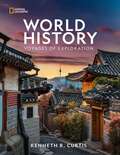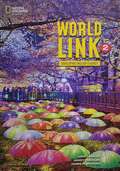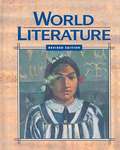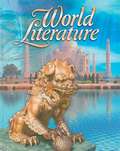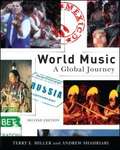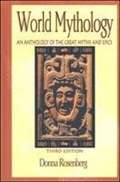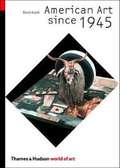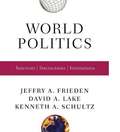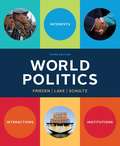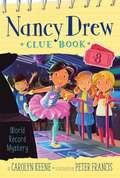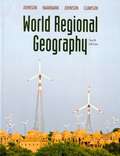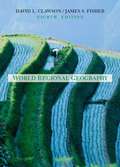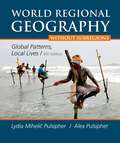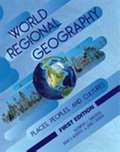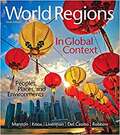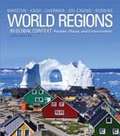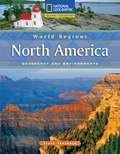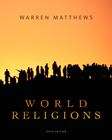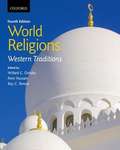- Table View
- List View
World Link 2
by Nancy Douglas John Hughes James R. MorganWorld Link, Fourth Edition teaches learners to communicate confidently. It develops integrated language skills with an emphasis on spoken English through familiar topics, relevant grammar, and essential vocabulary. World Link brings the world to the classroom through a famously fun video program, relatable National Geographic content, and teacher-tested lessons.
World Literature
by Susan Wittig Albert Richard Cohen Carroll Moulton David Adams Leeming Rose Sallberg Kam Thomas MonsellWorld Literature textbook for high school
World Literature (3rd Edition)
by Holt Rinehart WinstonThe textbook contains World Myths and Folktales, The African Literary Tradition, The ancient Middle East, The Literature of Ancient Mesopotamia, Greek and Roman Literatures, Indian Literature, Chinese and Japanese Literatures, Persian and Arabic Literatures, The Middle Ages, From the Renaissance to the Enlightenment, The nineteenth Century: Romanticism to Realism, Modern and Contemporary World Literature, and a lot more.
World Literature (3rd Edition)
by Jan AndersonWorld Literature introduces students to the wonderful variety of classic literature produced through the centuries. The first ten units showcase a medley of writing styles that illustrate various literary devices or themes. The last six units present literature by region and era. This breakdown helps the student to gain a full understanding of literature's variety, beauty, and history.
World Literature Fourth Edition 10th grade
by AbekaA book for young Christians who seek knowledge on world literature. Equipped with a good balance of poems, short stories, poems, plays, humorous selections that reflect christian principles from fine writers.
World Music: A Global Journey
by Terry Miller Andrew ShahriariThe second edition of World Music: A Global Journey introduces students to the diversity of musical expression around the world. It takes the reader across the globe to experience cultural traditions that challenge the ear, the mind, and the spirit. It presents a systematic study of varied traditions in a non-technical language accessible to any enthusiast of world music and culture. The second edition continues with its geographical orientation to each locale, and visits each of the seventy musical "sites" with a three-fold listening review that begins with an experiential "first impression" of the music. This is followed by an "aural analysis" of the musical organization and a closer look at the interesting instruments that create the exotic sounds heard. Finally, the authors consider the cultural connections that give the music its meaning. The second edition of World Musicenhances its pedagogical efforts with Listening Guides, an enhanced website, and improved interior design. With nearly 300 photos of instruments and cultural settings, over two hours of music on the accompanying audio CDs, and online resources, World Music: A Global Journey provides a fundamental resource for teachers, students, researchers, musicians, and any enthusiast beginning their exploration of world music and culture.
World Mythology: An Anthology of Great Myths and Epics
by Donna G. RosenbergWorld Mythology is a compilation of over 50 great myths and epics. Your students will gain an appreciation and understanding of ancient and modern cultures through myths and epics from the Middle East, Greece and Rome, the Far East and Pacific islands, the British Isles, Northern Europe, Africa, and the Americas. An introduction and historical background supplement each myth. Questions at the end of each selection prompt analysis and response.
World Of Art American Art Since 1945 (World Of Art)
by David JoselitNo other introductory book presents the diversity and complexity of postwar American art from Abstract Expressionism to the present as clearly and succinctly as this groundbreaking survey. David Joselit traces and analyzes the contradictory formal, ideological, and political conditions during this period that made American art predominant throughout the world. Social and cultural transformations rooted in mass media technologies―photography, television, video, and the Internet―elevated consumer commodities to the status of legitimate art subjects, as in pop and installation art, and also brought about a mechanization of the creative act. Canonical movements and figures are discussed at length―Pollock, Rothko, Krasner, Oldenburg, Johns, Warhol, Paik, Ruscha, Sherman, Schnabel, Koons, Barney, and others―in juxtaposition with lesser known contemporary artists and practices. 183 illustrations, 80 in color
World Politics
by Jeffry A. Frieden David A. Lake Kenneth A. SchultzWhy are there wars? Why do countries have a hard time cooperating to prevent genocides or global environmental problems? Why are some countries rich while others are poor? Organized around the puzzles that draw scholars and students alike to the study of world politics, this book gives students the tools they need to think analytically about compelling questions like these. World Politics introduces a contemporary analytical framework based on interests, interactions, and institutions. Drawing extensively on recent research, the authors use this flexible framework throughout the text to get students thinking like political scientists as they explore the major topics in international relations.
World Politics: Interest, Interactions, Institutions
by Jeffry A. Frieden David A. Lake Kenneth A. SchultzWhy are there wars? Why do countries struggle to cooperate to prevent genocides or to protect the environment? Why are some countries rich while others are poor? Organized around the puzzles that draw scholars and students alike to the study of international relations, World Politics gives students the tools they need to think analytically about the field's most compelling questions.
World Record Mystery
by Carolyn Keene Peter FrancisHelp Nancy and her friends find a missing lucky headband so River Heights teen Katie can break the world record at the local arcade’s dance game in the eighth book in the interactive Nancy Drew Clue Book mystery series.Everyone in River Heights has shown up to watch Katie McCabe try to beat the world record for the Dance-A-Thon game. Judges are coming to the arcade to see how quickly she can spin across the electronic dance floor and how many points she can win. But just as Katie’s about to get ready, she notices her lucky headband has gone missing! She always wears the blue, sparkly headband when she competes and knows she’ll bomb without it. Luckily, Nancy takes her Clue Book everywhere. Nancy, Bess, and George are on the case! Who is sabotaging Katie’s big day? Could it be the owner of the rival arcade, Michael Parker, who wanted the judges to see his world record sock attempt? Or May Bensen, the current Dance-A-Thon record holder? It’s up to the Clue Crew—and you—to find out!
World Regional Geography
by Royal BergleeWorld Regional Geography: People, Places and Globalization is designed for students to experience and study as much of the world as possible within a limited amount of time. It gives students the fundamental concepts and the latest data regarding world places in a concise, easy-to-read format. This textbook focuses on the primary issues that have created our cultural and societal structures, and presents them within a framework for global understanding. A pattern of development is outlined from the imprint that European colonialism had on culture to the impact that giant retail corporations like Wal-Mart have on consumerism.
World Regional Geography (10th edition)
by David L. Clawson Merrill L. Johnson Douglas L. Johnson Viola HaarmannPulling from an impressive team of ten authors, each chapter in this book has been authored by an expert in the region to provide the utmost accuracy and relevancy. World Regional Geography explores the character of the world's people, with a central theme of human development, for an issues-oriented overview of each region. An emphasis on subregions (places within regions) enables readers to explore specific locales. An economic development theme offers a more conceptual treatment than the traditional coverage of this topic. Basic Concepts and Ideas; The United States and Canada; Latin America and the Caribbean; Europe; Northern Eurasia; Central Asia and Afghanistan; The Middle East and North Africa; Africa South of the Sahara; South Asia; East Asia; Southeast Asia; Australia, New Zealand, and the Pacific Islands. The useful references for anyone who wants to learn more about the different regions of the world.
World Regional Geography: A Development Approach (8th edition)
by David L. Clawson Merrill L. JohnsonThis book is organized around the central theme of human development. Each author employs the human development theme to create a substantive volume on world regional geography that presents a vital, issues-oriented overview of the topic.
World Regional Geography: Global Patterns, Local Lives (Without Subregions) (Sixth Edition)
by Lydia Mihelic Pulsipher Alex A. Pulsipher Conrad Mac" GoodwinThe main goal of this book is to make global patterns of trade and consumption meaningful for students by showing how these patterns affect not only world regions but also ordinary people at the local level.
World Regional Geography: Places, Peoples, and Cultures
by Kazimierz ZaniewskiWorld Regional Geography: Places, Peoples, and Cultures provides students with a fresh approach to the study of world geography through a topical exploration of ten major world regions. The text explores the landscapes and societies on Earth in order to appreciate the environmental diversity of the planet and the cultural richness of humanity from the interdisciplinary perspective of geography. The book is richly illustrated with maps, photos, and graphs. <p><p> The book begins with a chapter introducing students to the geographic perspectives used to study places, people, and culture, including physical environment, human-environment interaction, population patterns and trends, systems of communication, systems of belief, political organization of space, and economic activities. Subsequent chapters build upon this knowledge and framework to help students explore North America, Europe, the Russian Realm, Southwestern Asia and Northern Africa, Sub-Saharan Africa, Latin America, East Asia, South Asia, Southeast Asia, and Australia and Oceania. Students study demographics, religion, linguistics, politics, agriculture, tourism, foreign and domestic policy, and more as they travel the world. <p> In reading World Regional Geography, students gain a deeper understanding of the rich geography and cultural traditions of major regions around the globe. It is an excellent resource for undergraduate courses in geography, international studies, and related fields.
World Regions In Global Context: Peoples, Places, And Environments
by Paul Robbins Paul Knox Vincent Del Casino Sallie Marston Diana LivermanWorld Regions in Global Context presents a strong global sensibility and an emphasis on current events, with examples of interdependent development, spatial and social inequality, and questions of spatial justice. The authors maintain that regions are the outcomes of the twin forces of globalization and regionalization. Therefore, each regional chapter stresses the global systems of connection that drive unique regional processes, making regions different. By studying regions, students not only learn the critical elements of different places, but also come to understand the fundamental processes that drive change. <p><p> The Sixth Edition is a briefer, more visual text that still maintains its conceptual rigor by addressing today’s critical geographic themes, incorporating deeper focus on sustainability issues, new human stories from the regions, cutting-edge data visualizations and infographics, including a completely modernized cartography program, and much more.
World Regions in Global Context: Peoples, Places, and Environments (5th Edition)
by Sallie A. Marston Paul L. Knox Diana M. Liverman Vincent J. Del Casino Paul F. RobbinsThe author provides a framework for understanding the global connections that affect the dynamic and complex relationships between people and the worlds they inhabit.
World Regions: North America Geography and Environments
by Steve SheinkinSocial Studies textbook for primary grade students. Part of Reading Expeditions series.
World Religions
by Warren MatthewsPresenting both the histories and the prevalent worldviews of the major world religions, Matthews's WORLD RELIGIONS, Sixth Edition, methodically introduces the richness and diversity of these traditions. The "Worldview" sections in particular make this book helpful for comparative analyses of the religions. These sections show how the different religions approach a common set of ten themes that are fundamental to all traditions, including the nature of the Absolute, the place of humans in the world, rituals and symbols, and the prospects for life after death. Furthermore, this text combines insightful, engaging prose with maps, photographs, timelines, excerpts from sacred texts, and other helpful pedagogical aids that provide a comprehensive yet accessible survey of world religions.
World Religions (Fourth Edition): Western Traditions
by Amir Hussain Willard G. Oxtoby Roy C. AmoreFeaturing work from expert contributors, World Religions: Western Traditions, Fourth Edition, provides students with an authoritative examination of Jewish, Christian, Muslim, ancient, indigenous, and new traditions. Accessible and engaging, this acclaimed text explores the origins, central teachings, divisions and branches, rituals and practices, influences on culture, and responses to modern challenges for each tradition.

